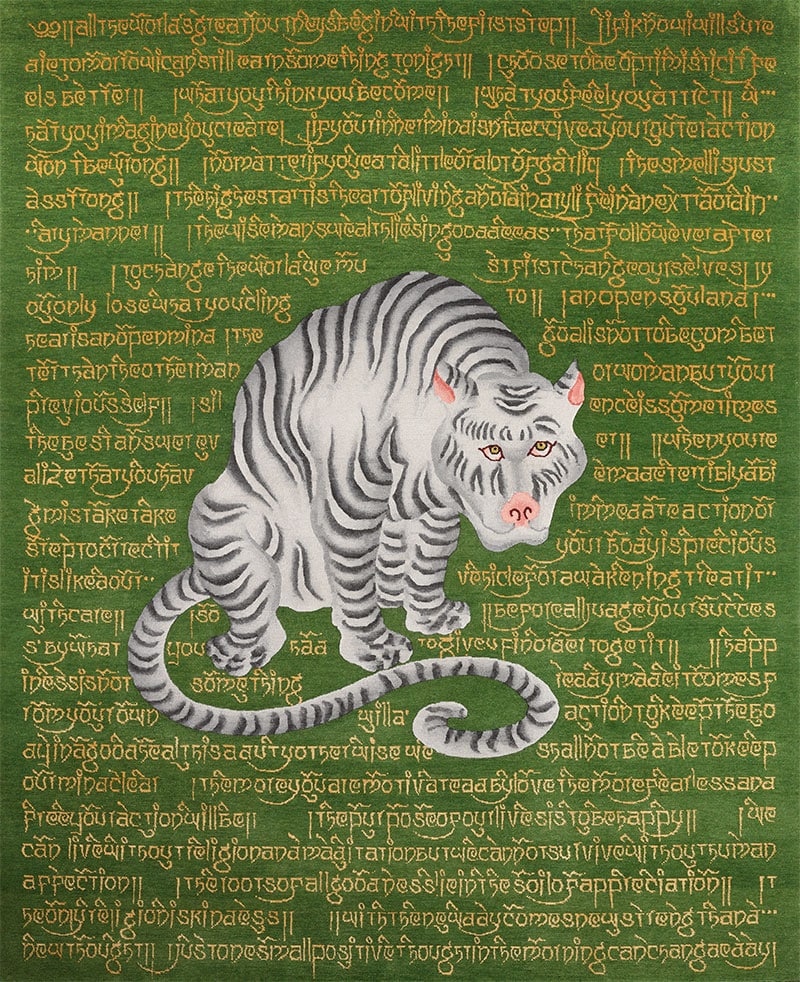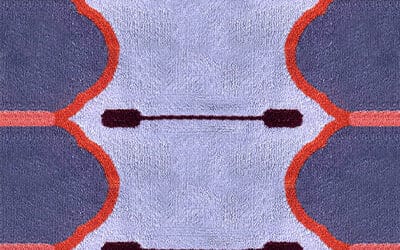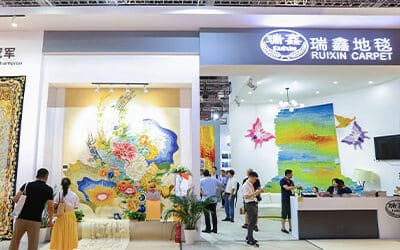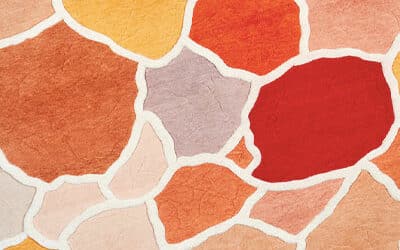In COVER 69, editor Lucy Upward spoke to Nepali artist Tsherin Sherpa. Here we feature the full interview in which he discusses using rug art to express his ideas about his homeland and its relation to the rest of the world.

When Nepal opened its inaugural pavilion at this year’s Venice Biennale, it was a momentous occasion for Nepali art, which is little known or understood outside of the country. As the pavilion’s featured artist Tsherin Sherpa says, ‘International understanding of Nepali art remains plagued by a Western conceptualisation of the Himalayan region: a pervasive, romanticised vision that frames Nepal as static, pure and untouched by time and modernity. We need to create a space to reflect and re-evaluate these biases.’
Sherpa’s installation in Venice, ‘Tales of Muted Spirits—Dispersed Threads— Twisted Shangri-La’, went some way to addressing these issues. What piqued my interest in particular was the presence of his Entangled Threads artwork, a clear comment on the rug industry in Nepal.
Two of Sherpa’s new rug designs—the magnificent The GIANT Ego-lessness and Three’s Not Always a Crowd—were also recently on show at Rossi & Rossi in Hong Kong in the exhibition ‘From the Himalayas to the Heartland’. Here I talk to Sherpa about his journey as an artist and how rugs have become an important part of his art practice.

I grew up in a family of traditional artists in Nepal. I trained in traditional thangka art under my father from the age of twelve. Later, after moving to the US in 1998, I began to explore more contemporary expressions within my traditional art practice. Exposure to contemporary Western art encouraged me to experiment with new visuals and mediums alongside the use of traditional motifs and symbolism.
I grew up in a typical Himalayan family, so rugs have been ubiquitous since my childhood. Despite their being an ever-present object, I was aware of their cultural significance early on. The rug was part of any family gathering or social event in the community. As the craft of carpet weaving is primarily handed down through the women in the family, I grew up watching my mother and grandmother weaving carpets that became part of the family heirloom.
Traditionally, rugs are more common in the upper Himalayan communities within Nepal. But with the development of the carpet industry as a booming large-scale industry in the 80s, rugs became signifiers of the unique skill and design sensibility of Nepal. Thus, they are recognised as one of Nepal’s chief exports and cultural heritages within the broader Nepali community.
After the 2015 earthquake, I came to Nepal and stayed for a longer period. During my subsequent visits, I was convinced that my work had its roots here. So in 2018 I established my studio in Nepal, where I am primarily based. With the earthquake, I was able to observe the value of rugs in creating a familiar social space within the temporary shelters and tents. I was moved by the ability of this familiar object to create a sense of belonging and safety at a time of great uncertainty and unease. I then started exploring rugs in my practice.

I used rugs initially in my exhibition ‘Beautiful Decay’, 2016, where this familiar material was a therapeutic presence in my response to the staggering calamity. The rug was also a strong presence in the Nepal Pavilion at the Venice Biennale 2022. This time, I wanted to explore the history of the carpet industry in Nepal through the installation—the half-woven rug hinting at the unfulfilled potential of this industry while hopeful of its possibilities for the future. The installation hinged on the dichotomy between the challenges we have faced in preserving this heritage and the vast potential that is open before us if we can recognise its value.
The story of Nepal is integral to my work because one of the core motivations in my practice has been to create more visibility for diverse Nepali stories. The voices here have been muted when they have been presented in international spaces. Rug making has a rich history here, but when the rug industry from Nepal became globalised, the designs started to be imported from elsewhere, with the country being largely associated only with manual skill. In fact, the country has a rich resource of designs that have been developed and perfected over centuries. The vision for my collaboration with contemporary design studio Mt Refuge was to generate space for Nepali narratives in the global arena.
Mt Refuge translated my designs into a graph design of carpets. These designs in turn were worked on by the skilled weavers of the studio. It was a complex but gratifying process of watching the designs evolve into rugs.

For my collection, I have worked on the theme of tigers. Not only are tigers pervasive subjects in thangka art, they are also universal symbols of strength and assertion. With 2022 being the year of the tiger, I found it serendipitous to represent a character that aligns with my vision of Himalayan art. Moreover, having seen this motif reappear in various Western brands, I wanted to reclaim it as an integral component of the Himalayan cultural expression. Thus, it was exciting to work with a local design studio and local artisans to produce these carpets.
Despite the rug industry’s growth in the international market since the 80s, the lack of regulation and support from the government, challenges within and outside the industry have hamstrung its potential. With its steady decline, there is uncertainty as to the preservation of this unique Himalayan art. However, since it is such an integrated part of the culture, we have the human resources to revive this art form as a thriving industry yet again. I see the potential to not only export our traditional designs, but also to integrate contemporary approaches into the designs with regulative measures from the government and support of private sectors.
I am excited to make more rugs in the future. I think the vast traditional resource has many possibilities for exciting new designs. Moreover, I think it is important to present our artistic voice in the international space by reclaiming our unique cultural heritages such as the Himalayan carpet. I hope that, through my artworks, greater visibility can be generated for the artistry and skill behind this traditional craft. Moreover, I hope it inspires positive change in the growth of the carpet industry here.




